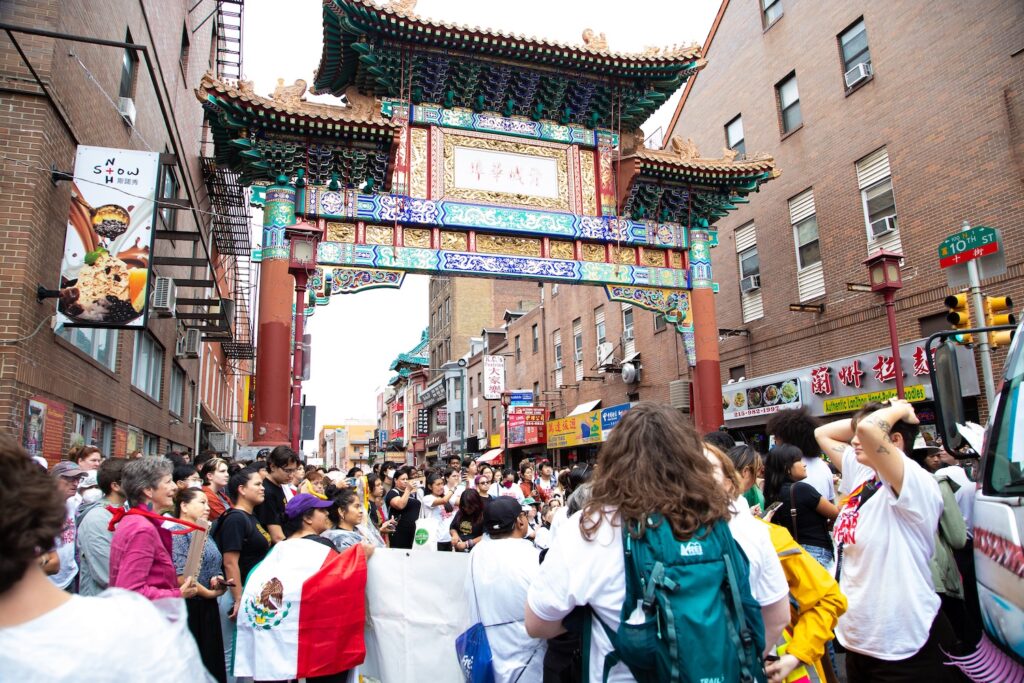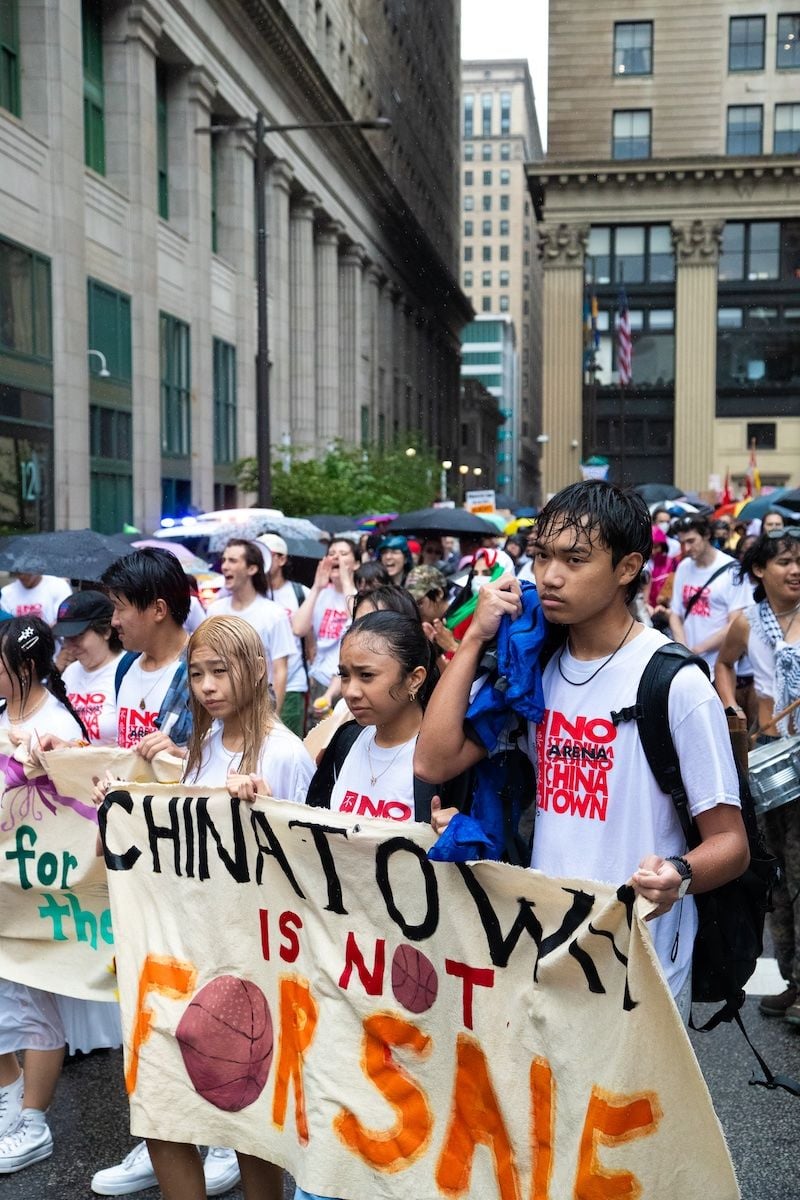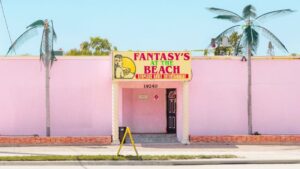Philly Chinatown Residents Don’t Belief the Area Growth Course of

That is your first of three free tales this month. Turn out to be a free or sustaining member to learn limitless articles, webinars and ebooks.
Belief the method. A decade in the past, the Philadelphia 76ers adopted this mantra as a shorthand for the skilled basketball franchise’s multi-year technique to construct a championship-winning staff. Whereas that promise has remained unfulfilled, the staff’s management has been asking the town to belief them, this time about constructing a brand new area within the coronary heart of the town’s downtown.
On Saturday, following the town’s latest launch of its long-awaited area impression research, greater than 3,000 Philly residents confirmed as much as say no. Within the newest show of widespread opposition to the proposed area, they marched by way of a downpour, from Philadelphia Metropolis Corridor to the Friendship Arch in Philly’s Chinatown. Drumming and chanting, they marched previous the world website, at the moment the western finish of the Trend District shopping center, simply south of the neighborhood.
Earlier than and after marching, protesters heard from elected officers in addition to representatives from the 240-plus teams comprising the Save Chinatown Coalition, which opposes the world out of concern that it’ll consequence within the oblique displacement of Chinatown. Audio system got here from everywhere in the metropolis, representing a number of races, a number of generations, a number of faiths, and a number of causes from environmental justice to defending queer communities in addition to Asian American communities.

The story of deep-pocketed builders versus working-class communities is nothing new in Philly’s Chinatown, which has received and misplaced these battles earlier than. However the Sixers’ adopted mantra units up an ideal clapback that encapsulates the way it’s at all times been about extra than simply the end result — area or no area. It’s in regards to the need for Philadelphia, and all cities, to interrupt away from their deference to deep pockets when figuring out the course of improvement.
“We won’t let builders proceed to dictate the method of how we stay,” Mel Hairston, an organizer from West Philly, mentioned on Saturday. “Your course of has failed. The persons are completed along with your rattling course of.”
The Chinatown course of
Philly’s Chinatown itself can’t be categorized as anti-development. The neighborhood has an extended historical past of resistance to displacement pushed by main improvement initiatives pushed by the town or by massive outdoors builders, however this opposition is instantly tied to the neighborhood’s personal imaginative and prescient and implementation for creating itself.
Learn: Philly’s Chinatown and Many years of Growth Fights
This neighborhood has its personal course of that doesn’t depend on billionaire builders.
After state and native officers revealed plans to bulldoze by way of Philly’s Chinatown to construct the Vine Avenue Expressway in 1966, Cecilia Moy Yep, a widowed mom of three with solely a highschool diploma, led the cost organizing towards it. Whereas they couldn’t cease the freeway, they made it narrower, saving a neighborhood church the place Yep was a member.
Yep went on to co-found the Philadelphia Chinatown Growth Company, which she got here to steer in 1974. Underneath her management over the subsequent three many years, the group constructed 5 developments in Chinatown, together with greater than 200 items of reasonably priced housing and 22 business areas.
The town seized Yep’s own residence through eminent area in 1982. She had held out for greater than 2o years after first receiving an eviction discover from the town in 1960. Often called the Chinatown Alamo, her residence was the final construction standing earlier than the town started building on a brand new commuter rail tunnel. Within the Nineteen Nineties, the town returned the block the place Yep’s residence as soon as stood, granting it to the Philadelphia Chinatown Growth Company as a part of a deal to compensate for companies displaced by the development of the Pennsylvania Conference Middle on the western facet of Chinatown. Yep’s group developed the land into storefronts with housing above.
In 1993, a federal jail was proposed for a big vacant lot on the north facet of the Vine Avenue Expressway, a couple of blocks over from Yep’s church. The neighborhood resisted, efficiently, and Philadelphia Chinatown Growth Company finally got here to develop an reasonably priced housing undertaking on the location as a substitute.
Yep retired in 2000, however not till the Philly Chinatown course of had grown past her and Philadelphia Chinatown Growth Company. Native resistance stopped a proposed main league baseball stadium on the north facet of the neighborhood again in 2000. Since then, close to the place that stadium would have been constructed, the Asian Arts Initiative has acquired and renovated an deserted constructing right into a thriving arts and tradition hub, and native residents have turned an deserted warehouse into the Folks Arts Cultural Treasures Constitution College.
And in 2019, Philadelphia Chinatown Growth Company opened a brand new group heart with 150 items of housing above, positioned in that very same a part of Chinatown north of the Vine Avenue Expressway.
Watch our webinar: Chinatown Group Land Trusts in Motion
The sector course of
Just like the staff’s course of on the courtroom, the Sixers’ course of to construct a brand new courtroom in downtown Philadelphia has dragged on longer than each the staff and its followers would really like. It’s been greater than two years because the Sixers unveiled their imaginative and prescient for the world, hand in hand with the Trend District’s present homeowners, an actual property funding belief primarily based in California.
Each reward and opposition got here loud and quick. The Sixers’ proposal drew quick and apparent comparisons to the development of the MCI Middle, now the Capital One Area, in D.C.’s Chinatown, which opened in 1997. A part of the neighborhood was bulldozed to make method for that area. Inside a decade, all that was left of that Chinatown was one tenant-owned reasonably priced housing undertaking and a handful of eating places and mom-and-pop outlets that hardly survived the wave of improvement that flooded the neighborhood within the area’s wake — together with D.C.’s Chinatown friendship arch (paifang, as they’re historically recognized in China).
Learn: What Philly Can Study From the Making of D.C.’s Chinatown Sports activities Area
The historical past of razing Chinatowns to make method for main sports activities venues goes again even additional. In 1966, St. Louis bulldozed its Chinatown, often known as Hop Alley, to make method for Busch Stadium, residence of main league baseball’s St. Louis Cardinals. This 12 months, the franchise celebrated the Yr of the Dragon — taken from the Chinese language zodiac calendar — with commemorative t-shirts that includes a dragon-themed model of the staff brand.
The Sixers aren’t planning to bulldoze any of what’s at present thought of Philly’s Chinatown to make method for his or her new area. However because the proposal was unveiled two years in the past, native residents and companies each new and long-established have been united of their concern that the world’s building would function a bellwether for the transition of the neighborhood towards a imaginative and prescient centered on area guests relatively than its legacy as a business and cultural hub for Asian People throughout the Delaware Valley.





